#protest mural
Text
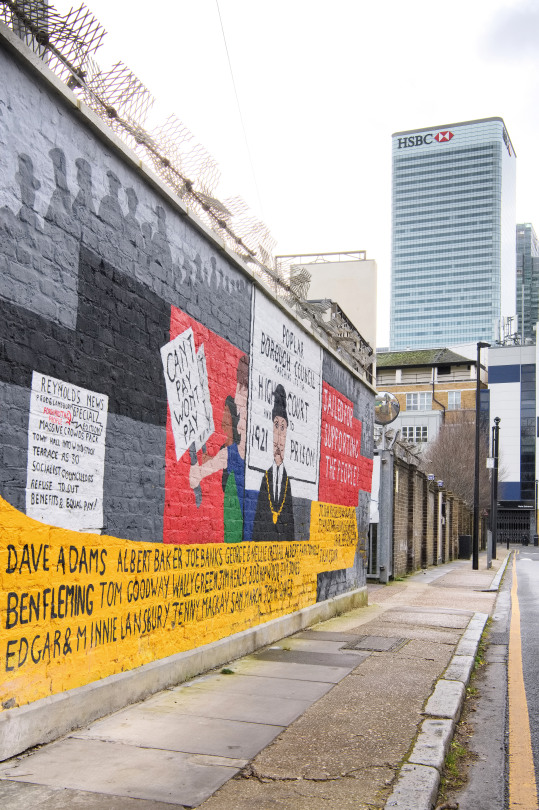
A mural commemorating the 1921 Poplar Rates Rebellion (a tax protest) contrasts with the nearby HSBC Tower in Canary Wharf, Poplar, London
#london#Poplar#Canary Wharf#mural#Poplar Rates Rebellion#1921#tax#protest#urban#urban photography#street art#bank#HSBC#England#UK#cityscape#skyscraper
54 notes
·
View notes
Text
in northern ireland during the troubles (and before) catholics used murals as a way of both claiming territory/identity and taking up space in public when they couldn't march. it was a way of forcing their voices to be seen and heard when the media and the government were against them. it was a way of protesting. i will elaborate later but do you get me. marching, posting - all good but not the only way to resist. there is so much in our arsenal and we aren't exploiting it. you don't need 100k followers or ten thousand people marching with you to make your voice heard - you can start now, alone. make it impossible for palestine to slip from public consciousness, make everyone know and everyone remember
#murals are just an example btw#for talentless fucks such as myself posters stickers and graffiti also work#protestants also used murals btw. they did it first in fact#catholics only really picked it up after bloody sunday and shit#ok might actually make a post later bc murals and shit played a pretty big role#very interesting. to me ig#anyway history repeats!!! this struggle has been fought and won before#learn from what has helped snd what has worked#i feel as though many of us are stuck in a loop of not really being able to do shit besides. email post and weekly protests#all good for sure but there is more you could do#there always is#palestine#gaza#free palestine#israel#northern ireland#ireland#free gaza#colonialism#genocide#ethnic cleansing#politics#social justice
52 notes
·
View notes
Text
#mural#art#protest for palestine#justice for palestine#spread awareness#seek the truth#israel is committing genocide#genocide#israel is an apartheid state#apartheid#save palestine#free palestine 🇵🇸#gaza under siege#gaza under attack#malcolm x#israel war crimes#this was never about hamas
32 notes
·
View notes
Text

Banksy The Flower Thrower. 2003. Painted on a wall in Beit Sahour in the West Bank.
#banksy#graffiti#chaos#activism#art history#palestine#street art#street#mural#painting#flowers#war#politics#culture#anarchy#2000s#protest#design#peace#equality#📚
137 notes
·
View notes
Photo


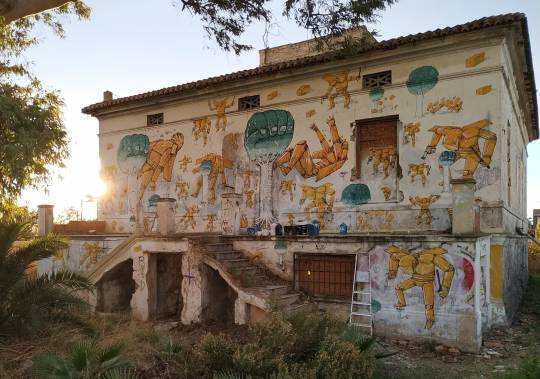
Street Artist Blu Protests the Valencia Port Expansion with a Tumultuous Battle Between Nature and Guards
270 notes
·
View notes
Text
starting my favorite unit in my comp class and I really hope my students enjoy it. like tomorrow we're spending time looking at a bunch of cool art and music to talk about using them to make real world change and it will be fun and interesting Or Else
#like. I've got Carrie Mae Weems art in there and public murals responding to structural violence#and music about land repatriation responsing to the Wetʼsuwetʼen pipeline protests a few years ago#and a video from Te Papa about a photography exhibit about environmental restoration and the whakapapa of the landscape#if they don't enjoy it I'm gonna be sooooo sad#me in my classroom exhorting my students to be community engaged
19 notes
·
View notes
Photo

When truth is no longer free,
freedom is no longer real:
the truths of the police are the truths of today.
—Jacques Prevert
#art#street art#graffiti#murals#street#human rights#police brutality#protests#democracy#justice#worldwide#issues#words#quotes#jacques prevert#thailand#Myanmar
192 notes
·
View notes
Video
Masacre of Innocents by FotoFling Scotland
Via Flickr:
Art Mural at St John’s Episcopal Church, Princes Street, Edinburgh
#Church#Street Photography#Princes Street#Massacre of Innocents#St John’s Epistopal Church#Street Art#Mural#Massacre#israeli war#israel#palestine#Protest#flickr
6 notes
·
View notes
Text
Not to be Protestant but tbh I think the idea of a holy place being just a bunch of desks and foldable chairs can be kinda sexy too in religious art,,, just a thought,,,
#Like it’s not as flashy as murals and statues and those fancy windows#but I think that’s part of the good in it!#idk. I’m not actually Protestant but I think that something completely mundane being holy can have merits y’know
3 notes
·
View notes
Photo

Murals by Iranian-American artists across Los Angeles are inescapable reminders of the regime’s ongoing brutality. Through these public artworks, artists in the Iranian diaspora are able to speak to — and amplify — those whose voices are being stifled.
Read Matt Stromberg’s full article.
Mural by Cloe Hakakian and Todd Goodman (photo by and courtesy Impermanent Art)
8 notes
·
View notes
Text
¿Arte callejero, murales, pintadas, arte efímero? ¡Arte popular! Simbología de la protesta
Una práctica común en la protesta callejera es la intervención: la modificación de un objeto para cambiar su significado. Los adversarios de un candidato electoral alteran su imagen en el cartel añadiéndole un orificio sangriento (en los casos más extremos) o sencillamente un toque rojo en la nariz para convertirlos en payasos. Las imágenes publicitarias son otro objetivo. Por ejemplo, a una hamburguesa se le pueden poner cuernos y ojos (14), como diciendo: “Detrás de la carne está el animal” (propaganda animalista o vegana).
https://elpais.com/elpais/2016/09/10/eps/1473458740_147345.html

Aunque sean visuales, las imágenes de protesta pueden ser ecos de usos lingüísticos. De alguien explotado en su trabajo diremos que le “exprimen” o que le están “sacando el jugo”. El anónimo diseñador aprovecha el parecido de un casco de trabajador con media naranja para ilustrar esta metáfora (15). Ya Milton Glaser (el creador del famoso lema “I LOVE NY”) señaló en su libro de 2005 Diseño de protesta, dedicado a obras callejeras y de diseñadores, que con frecuencia la obra de aficionados era tan poderosa como la de profesionales.
“en las dictaduras, brigadas especiales de limpieza madrugan para que los ojos de los ciudadanos no se encuentren expresiones de descontento”.
#¿Arte callejero murales pintadas arte efímero? ¡Arte popular! Simbología de la protest#¿Historias cortas para no dormir y no tener pesadillas? ¡Caray que Tropa!
4 notes
·
View notes
Text
Graffiti is not vandalism, but a very beautiful crime
Where do you expect to see grafitti? Of course not in a museum. But it is an art form right? Why is it not in a museum?
Graffiti is found in many societies with different cultural contexts and has become a witness and an ethnographic source of information on urban art development (Waclawek, 2011). Modes of expression are mainly related to visibility, notoriety, choice of venue, transgression, and are often a mean to react and protest while remaining anonymous, by illegally introducing messages in the public space. Contemporary graffiti is also described by its controversial issues between social, style and aesthetic forms along with vandalism aspects. Facing a worldwide plethoric production, the assumption that Graffiti is a positive urban art form raises some paradoxical questions regarding “visual pollution”.
However, it is often seen as illicit production and vandalism asset. For instance, removing graffiti or restricting the practice of graffiti from the public space has been a controversial issue for artists and authorities. A question therefore arises: how can the aesthetic and pictorial aspects of these acts of creation be considered as acts of vandalism? (Bengsten, 2016)
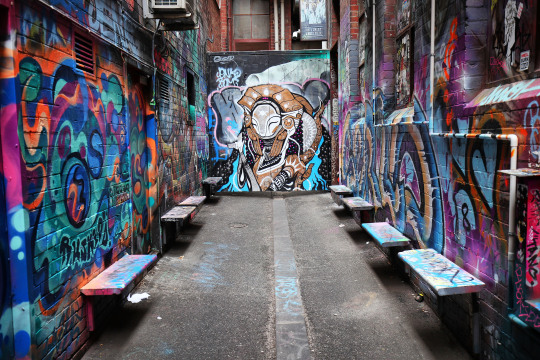
The growing interest leads to different perceptions probably with greater attention to the act of "heritage" at the expense of the act of protest. The patrimonialization of graffiti and, to a large extent, of Street Art is an essential point, because graffiti writers or street art practitioners often see institutions as "looters" who, come to preserve cultural acts that other public institutions have condemned (Omodeo, 2016). Heritage is primarily a process which, in principle, prevents any destruction or voluntary surrender of an artwork, which are a corollary of creation and its limitation of copyright in time. For most “writers”, Graffiti is not an act thought out on the basis of a future conservation. The issue is visibility and notoriety, by the number, size and/or the choice of venue. Regarding paint materials, so many spray paint brands are available to the general public in hardware stores. Graffiti writers would not necessarily comply with this rule as their preferences for brands are more related to habits, opportunities and word of mouth, along with, plastic qualities and not for resistance properties.
If Graffiti question the artistic approach of the artist and the context of their creation, it also poses those of alteration mechanisms, sometimes irreversible, these colors, which are significant from the point of view of heritage conservation. This encourage today to have a different perspective than that of the material history of the work with the creative process, the components used and the effects of environment parameters and ultimately, of time (Colombini, 2017). The traditional methods of conservation are questioned; which must intervene and what modifications in relation to the original one can be accepted? (Beerkens, 2005). Is it essential to invite the artist to take part in the heritage process? One must look at the field of Muralism, mainly in the USA, to find more innovative and frequent restoration procedures. Indeed, the restoration of murals, often monumental paintings, is a civic and collective act within the "neighborhood". The actors of the restoration/renovation are both volunteer civilians trained and supervised by experienced conservators, artists and more generally, of persons engaged in neighborhood committees (Shank, 2004).
This is not without rewards and sometimes reveals abuses that go beyond the artistic acts. The practice of graffiti and its legislation ambiguities are at stake. Graffiti and Street Art have their own definitions and interpretations, but they have something in common with illegal acts when it comes to the artistic act carried out on surfaces without the given permission by a property owner, whether public or private. We are now witnessing a radicalization of practices both from two points of view: legality and vandalism. The character of these acts explains why some artists (not only from the graffiti scene) have seen their career highlighted with arrests, penalties and sometimes trials, while their works are copyrightable (Moyne, 2016). The question of authenticity of paint arises when, aesthetic and style expertise, may not be sufficient to ascertain whether the juridical designation of Street Art as “Art” versus graffiti as vandalism. This is even truer for legal graffiti, mainly because of the variability of quality of the known and the good quality of spray paints, supposedly meant to last, as opposed to, the use of cheap brands of spray paint as illegal graffiti (Marsh, 2007).
This post relates to the duality of the modern graffiti phenomenon, as to whether it is a vandalism act or a cultural production. It focusses on a comparison study, mainly through artist interviews, between the evolving graffiti practices in Western major cities where illegality is often reclaimed by artists, and the fast emergence of graffiti in China, where this artistic expression is not only watched through its illegal and vandalism forms, but also for its aesthetic perceptions, though practices happen in restricted areas for expressing social, anti-official and political actions (Valjakka, 2011).
Graffiti are buffed, almost straight away, by city cleaners the so called “buffers”, who are in the streets to remove all sorts of inscriptions from plumbers to whatever girl ads. If they cannot scrap it out, they paint over and that is why graffiti never lasts. At the same time, the relationship with authorities has improved very much over the last few years. It is more and more common to negotiate with the police by explaining what graffiti writers are doing, colours and mode of expression for everybody, in order to, embellish the streets rather than litter or vandalize them. From a civilization where calligraphy has been the core of the artistic production, the writing on a wall has different meanings than in a Euro-American context (gangs and political + social protests). Confronting these two almost opposite approaches, it allows a better understanding of this artistic form, as to whether it is considered vandalism or art. This controversial interrogation can be illustrated by the artist Bando’s quote “Graffiti is not vandalism, but a very beautiful crime”.
#graffiti#art#vandalism#wall mural#streetart#colour#protest#activist#artistic#museum#rights#illegal#social history#culture
5 notes
·
View notes
Text
every now and then i will have a thought about the 70s and then spontaneously combust into a thousand fla[gets dragged away by security]
#chicano was originally a slur towards mexican americans but was reclaimed during the 60s-70s during the california strikes#back then students were also mostly just taught about white history (or black if they were lucky) but never their own#so protests and calls to learn their own history was made which also resulted in heavy pride within themselves#you'll also see a lot of indigenous pride when it comes to the chicano movement back in the day#especially if you look at the murals which have a lot of inspiration derived from mexican catholicism and indigenous imagery#(which is a little ironic to me considering mexico doesn't exactly treat their indigenous population well but i digress 🫠🫠)#then we also have chicano park which is also one of the biggest icons of chicano history#it was built back in the 60s but split up a neighorhood-- the government promised to build a park to compensate but eventually the folks li#-ing there found out they were going to turn it into a patrol station instead and protested in 1970#eventually chicano park was built and after it opened a shit ton of murals came up because at the time there was the chicano mural movement#and a muralist proposed letting others paint on the walls since a lot of the structures built happened to be pretty good canvases#this is all kinda basic history and you could easily look most of this up lmao#i just like rambling#anyways thats my time folks security is eyeing me like they're about to ban me okay b[Electric Taser SFX]#pyro screams to the abyss
1 note
·
View note
Text
I think ACAB is a useful concept but doesn't describe exactly what I believe. I have met cops who are useful and nice in certain circumstances, including more than a few who helped save the lives of kids. There was one who was a suicidal teen's only contact outside of a hospital and the way they checked in on them and encouraged them is part of why they survived. But you have to assume that due to training in their system, the way coworkers force out people who aren't rough enough or think a certain way, as well as how the profession draws people or abusers who want power and authority over others, that those same cops are still dangerous in different circumstances. I know this is compatible with ACAB, but some people who say that do mean cops are awful all the time.
I think of cops as a loaded gun. Always assume they could go off at the wrong moment. Don't leave kids alone with them. Useful in specific circumstances, but don't point them at anyone without warning, and unless you're okay with them possibly getting hurt or there aren't better alternatives. There should be steps before they are used. There should be alternatives.
#i think too much about this because i have friends who protest and try to defund the police#and then i tell those same friends about my fanfiction i write lol#also fanfiction's different anyways#in fiction cops are often protective people who get involved and i like those kinds of characters and people#irl that type of person is often an advocacy worker or community leader#of course i think about this though i worked in minneapolis during the george floyd stuff#used to drive the kids to look at the murals for all the people killed by police#the new staff i trained all thought it was an official rule to never leave kids alone with the police because i was so adamant about it#i did not dissuade them of this misconception#my supervisors were not pleased#to anyone who actually read this who's sus of the cop who kept in touch with a kid: i was too. Nothing ever happened#and that kid was loud about reporting if anything boundary crossing ever happened to them. and the cop encouraged that#rambling
0 notes
Text
Latest commission: Protest poster for Women in Revolt mural at Camden arch commissioned by @tate and @buildhollywood to promote the new exhibition at Tate Britain, November 2023.
Mural design @disco_dickins
Protest posters: @ankadabrowskaart @disco_dickins @yesoliviatwist @zhouning__ , @_alice_hartley_ @esmelower #camdenarch #mural #womeninrevolt #protestposters #tate #exhibition
Location: Arch S14/15 Hawley Wharf, London NW1 8NX
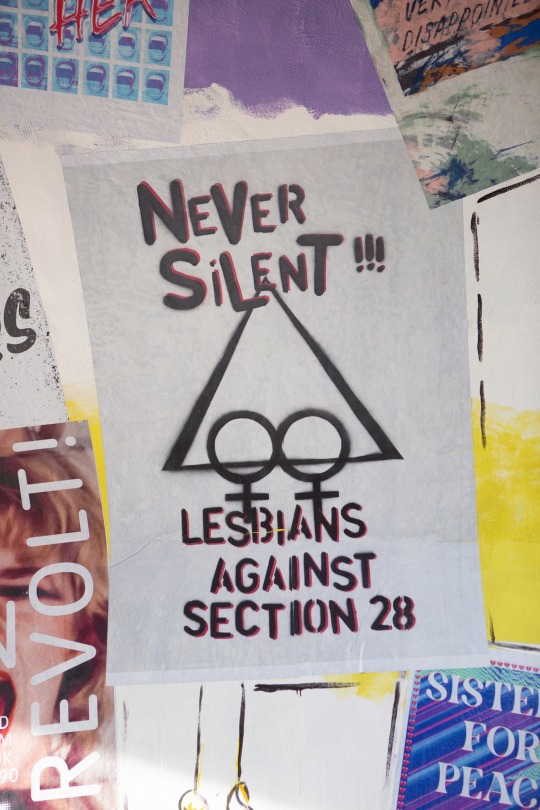

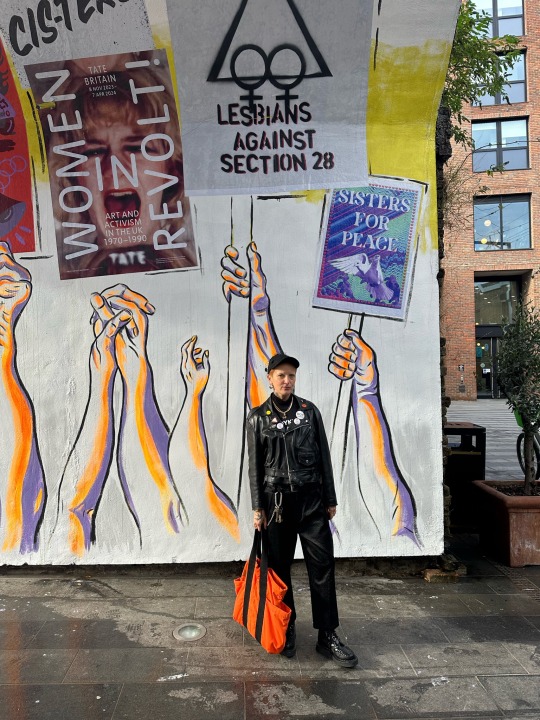


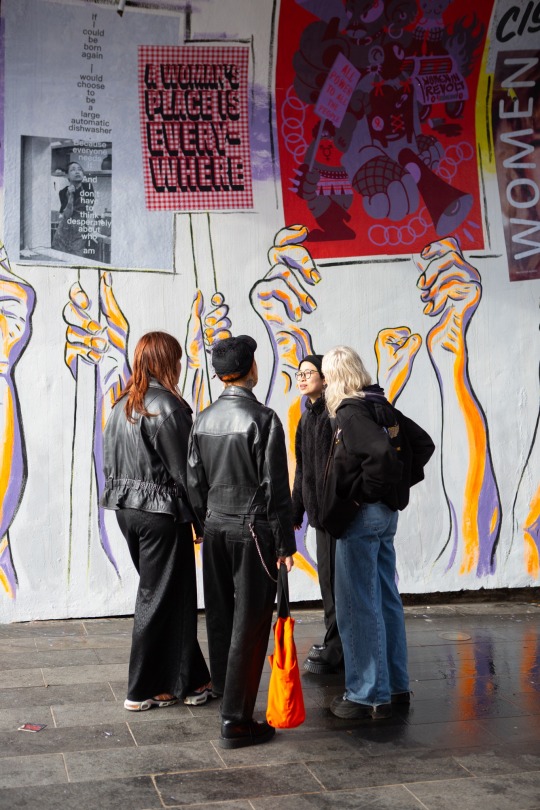


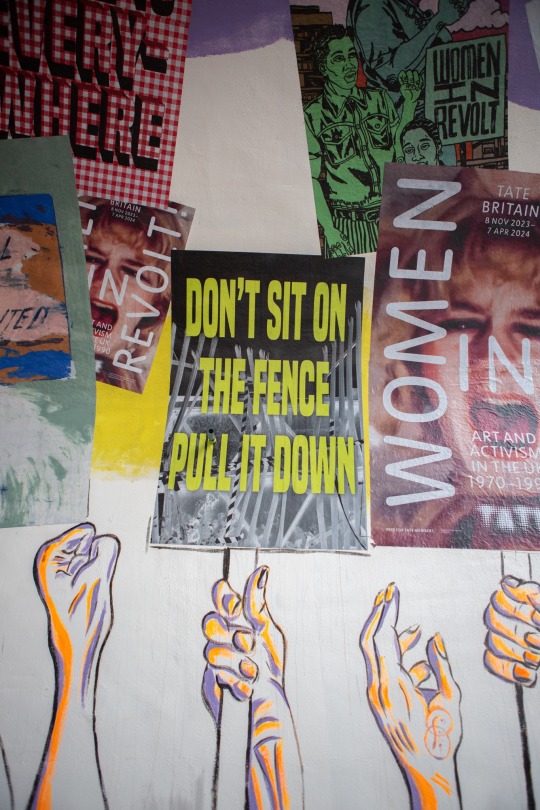
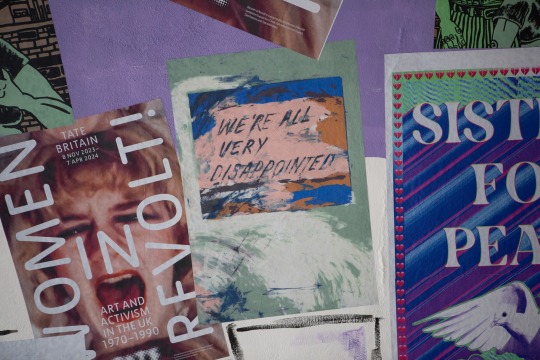
#ankadabrowskavisualartist#poster#protest#camden#mural#exhibition#commission#spraypaint#slogans#london#art
1 note
·
View note
Text
Power To The People
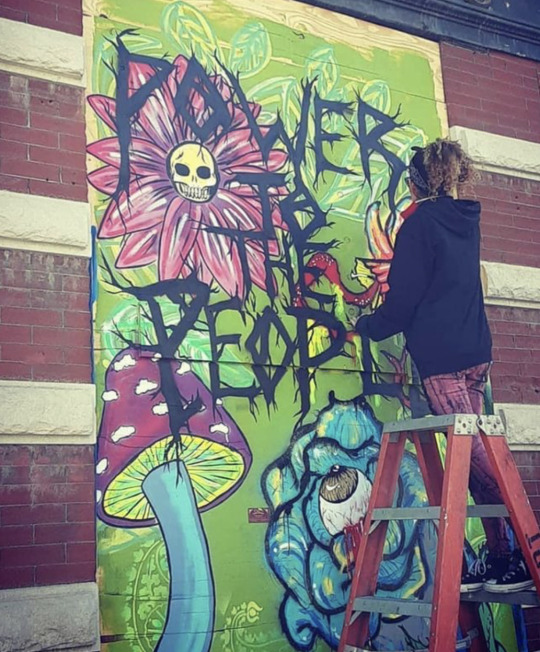
Protest mural from 2020
collaboration between Natalia Sustaita and Angel Lunetta
1 note
·
View note